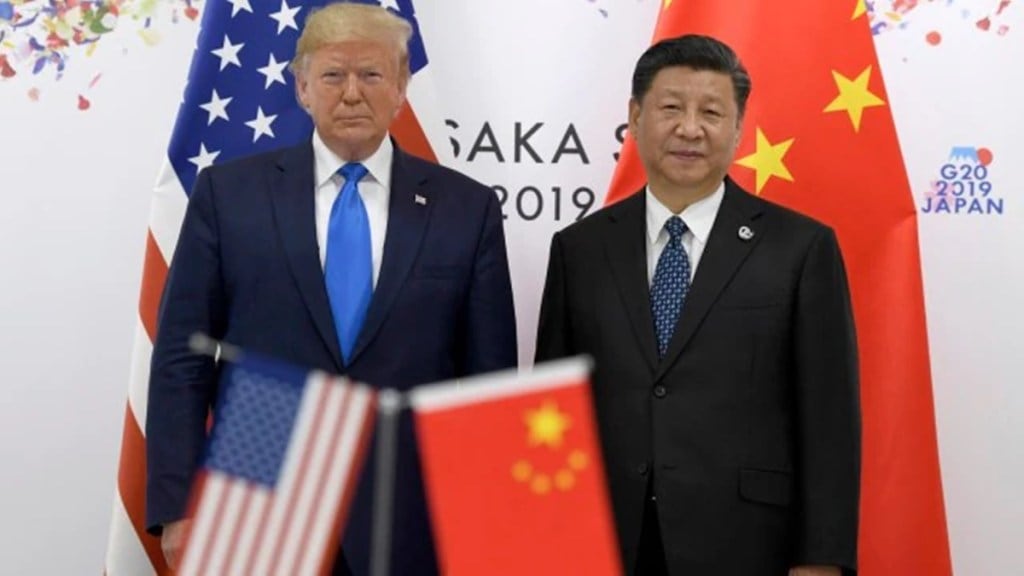The agreement by the US and China to sharply reduce tariffs from the earlier punitive levels may expunge the possibility of any quick gains by Indian exporters from the trade stand-off between the two largest economies.
With the the US cutting the tariff on Chinese imports to 30% from 145%, companies, who were planning to shift production lines out of China, might defer such moves. Also, Chinese firms that have approached Indian industry to help fulfill the supply commitments to the US buyers on their behalf may rethink that strategy.
Indian exporters were approached by American buyers seeking supplies of a host of items like home textiles, apparel and engineering goods. Such orders might now dry up, as the US buyers would take a cautious approach.
The US and China said Monday reached an agreement to “temporarily reduce” the implausibly high tariffs they have imposed on each other, even while seeking to defuse the trade war.
“In a joint statement, the countries said they would suspend their respective tariffs for 90 days and continue negotiations they started this weekend. Under the agreement, the United States would reduce the tariff on Chinese imports to 30% from its current 145%, while China would lower its import duty on American goods to 10% from 125%,” The New York Times reported.
“We concluded that we have a shared interest,” the paper quoted US treasury Secretary Scott Bessent as saying in a news conference in Geneva, where U.S. and Chinese officials met over the weekend.
At the trade fair in Canton – which is considered the largest in the world – the Chinese units approached Indian manufacturers among others to fulfill their US orders. In return, the Chinese were seeking commission. This offer was made as the Chinese wanted to retain their buyers.
“The Chinese had even offered to support some Indian manufacturers with inputs and technical help so that they could supply. Things were at the discussion stage with both the Chinese and the buyers in the US. Now the process is expected to slow down considerably,” chairman of Engineering Export Promotion Council (EEPC) Pankaj Chadha said.
The latest move by the US and China represents a significant thaw in trade tensions between the two largest economies and a challenge and opportunity for India, according to Federation of Indian Export Organisations (FIEO).
Now, the additional US tariff on India is 10% as compared to 30% on China. “As the tariff gap narrows, companies that had planned to shift production to places like Vietnam, India, or Mexico may return to China. The “China Plus One” strategy could quietly fade,” founder of Global Trade Research Initiative (GTRI) Ajay Srivastava said. “While low-investment assembly operations may linger in India for now, deeper manufacturing—the kind that builds real industrial ecosystems—may stall or even return to China. Investors are watching the US tilt, and many will hesitate to commit unless India can lock in a competitive advantage,” he said. He added that a smart trade deal with the US could help preserve India’s 10% tariff access and prevent any hike to the proposed 26% under Trump’s new country-specific duties.
The reduction in tariffs will likely result in a surge of US-China bilateral trade in high-value segments such as electronics, machinery, and chemicals, FIEO President S C Ralhan said. “ This may intensify competition for Indian exporters in third markets like Southeast Asia, Africa, and Latin America, where India has recently made inroads capitalizing on US-China trade disruptions,” he said.
“With reduced tariffs, Chinese exporters may regain their competitive edge, potentially at the expense of Indian suppliers. India’s expected gains will be nullified once this tariff reduction attains permanence leading to increased trade between the two nations,” secretary general of Apparel Export Promotion Council Mithileshwar Thakur said. He said supplies to the US had picked up after disturbances in Bangladesh and demand was continuing. With higher tariffs on China more orders would have come now it is wait and see, he added.
“However, India can leverage this shift to strengthen exports in sectors that remain relatively insulated from US-China trade, such as Pharmaceutical APIs, Gems and Jewellery, Engineering goods, Organic chemicals and IT-enabled services,” Director General of FIEO Ajay Sahai said.
“India must proactively engage with the US to secure and expand its preferential trade access, emphasizing its role as a reliable alternate sourcing destination,”Ralhan said. The temporary nature of the tariff cuts may lead companies to hedge against future volatility by expanding manufacturing in India under the Make in India and PLI schemes, especially in electronics, auto components, and textiles, he added.
